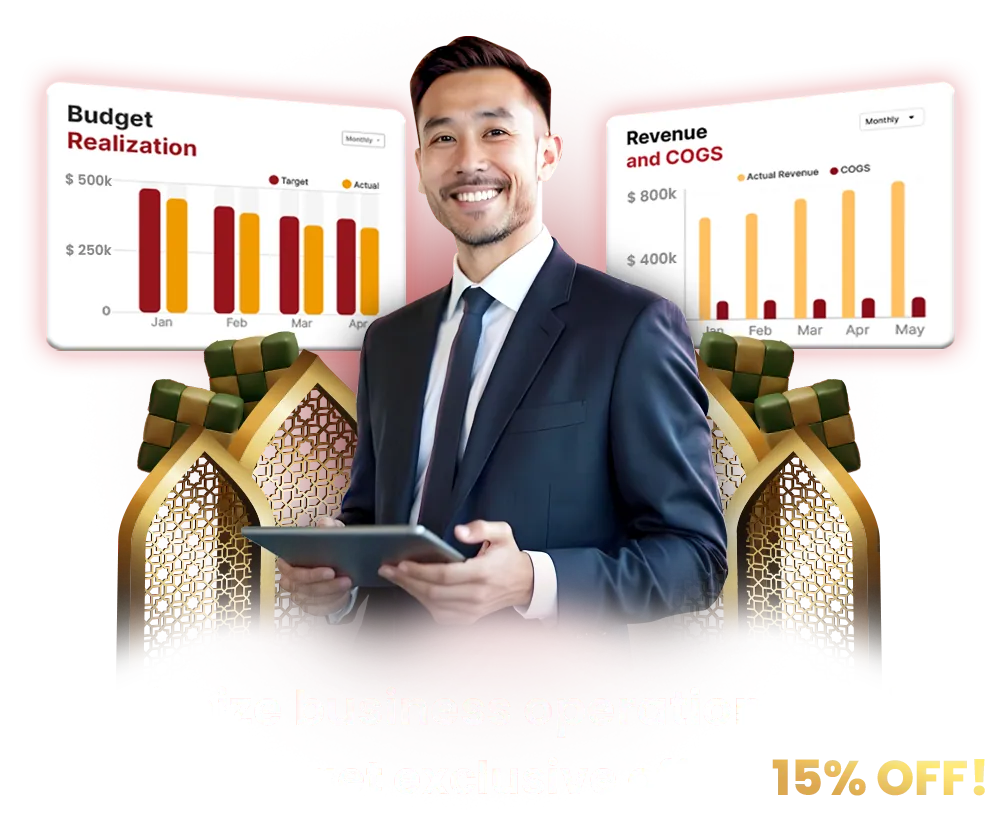Malaysian businesses are facing mounting pressure to meet ESG expectations—but many still grapple with unclear standards and inconsistent reporting. As regulatory demands grow and investors prioritize sustainability, having the right ESG framework is no longer optional.
A global study of 1,114 ESG reports revealed a clear shift toward standardized reporting, signaling that businesses must act fast to build legitimacy and reduce uncertainty. In this guide, we’ll break down what an ESG framework is, why it matters, and how local companies can implement it effectively.
Key Takeaways
|
Table of Content
Content Lists

What Is an ESG Framework?

An ESG framework is a set of guidelines that helps businesses measure and report how they perform in three key areas: environmental impact, social responsibility, and corporate governance. It serves as a roadmap for companies to share their sustainability efforts with stakeholders, investors, and regulators in a clear and consistent way.
These frameworks typically include specific indicators and reporting requirements—such as how much carbon a company emits, how it supports employee welfare, or how decisions are made at the leadership level. By following an ESG framework, companies can improve transparency, reduce risks, and align with both business goals and sustainability standards.
In Malaysia, ESG adoption is gaining momentum as businesses respond to rising regulatory demands and stakeholder expectations. Some frameworks are required by law, while others are voluntary—but choosing the right one can help organizations meet compliance needs and build a stronger, more sustainable business.
What Does ESG Stand For?
ESG stands for Environmental, Social, and Governance—three pillars used to evaluate a company’s ethical standards and sustainability practices. Together, these elements form the foundation of any effective ESG framework.
- The Environmental aspect looks at how a business affects the planet. This includes carbon emissions, energy efficiency, waste management, and climate risk initiatives.
- The Social aspect focuses on how a company treats people—employees, customers, suppliers, and the communities where it operates. Topics include labor rights, diversity, health and safety, and social equity.
- The Governance pillar evaluates how a business is run, including leadership structure, transparency, ethical behavior, and accountability to stakeholders.
Understanding these three areas helps businesses build a well-rounded ESG strategy that supports long-term growth, builds trust, and improves their ESG score over time.
How ESG Frameworks Have Evolved
The idea behind ESG frameworks has developed steadily over the past few decades, shaped by changing views on corporate responsibility and sustainability. What started as basic environmental and labor initiatives has now become a global standard for responsible business.
- 1980s–1990s: Early Environmental and Labor Efforts
During this period, attention focused on workplace safety and pollution control through the Environment, Health, and Safety (EHS) movement. In the 1990s, more businesses adopted sustainability goals, though some efforts were criticized for being surface-level or “greenwashed.” - 2000s–2010s: Rise of CSR and Formal ESG Standards
The early 2000s saw the growth of Corporate Social Responsibility (CSR) programs, with companies investing in philanthropy and ethical practices. The term ESG was officially introduced by the UN in 2004, leading to the development of the first global ESG reporting frameworks and greater demand for standardized disclosures. - 2010s–Today: Proactive, Data-Driven Sustainability
Modern ESG approaches are focused on prevention rather than reaction. Companies now use technology to monitor sustainability risks in real time, improve governance, and meet stricter regulations. Investors and regulators increasingly rely on ESG data to assess business resilience and ethical impact.
As ESG continues to evolve, Malaysian companies are recognizing the need to adopt structured ESG policies and frameworks to stay relevant, credible, and competitive in both local and global markets.
Why Is ESG Reporting Important?
For Malaysian companies aiming to grow responsibly, ESG reporting frameworks are no longer optional—they’re essential. These frameworks help businesses communicate their sustainability efforts clearly, earn stakeholder trust, and meet regulatory expectations.
Here’s why ESG reporting matters:
- Builds stakeholder and investor trust
Transparent ESG reporting shows that a company is committed to ethical practices, making it more attractive to investors and business partners. - Reduces risks across the supply chain
With the right ESG framework, companies can assess their vendors and partners to ensure responsible sourcing, labor practices, and environmental compliance. - Creates competitive advantage
Businesses with strong ESG disclosures tend to attract more customers, talent, and capital—especially as buyers and investors look for sustainable brands. - Improves brand reputation
A clear, consistent ESG strategy demonstrates accountability and helps businesses align with public expectations around sustainability and social impact. - Supports long-term planning and growth
Using an ESG framework encourages companies to set measurable goals, track their performance, and adjust strategies for sustainable success.
With increasing global pressure for transparency, adopting an effective ESG reporting framework positions businesses for resilience and long-term value creation.
Tips for Finding the Best ESG Framework for Your Company
Choosing the right ESG framework is a strategic decision that depends on your industry, operations, and reporting needs. The right fit will help your business stay compliant, build credibility, and meet both local and international sustainability standards.
Here are five key factors to consider:
1. Understand Your Business Impact and Goals
Start by identifying the sustainability issues that matter most to your company. Consider how your operations affect the environment, communities, and governance practices. Aligning your goals with a suitable ESG policy framework ensures that reporting efforts focus on what’s most relevant.
2. Align with Stakeholder Expectations
Investors, regulators, and even customers now expect greater transparency. Choosing a widely recognized ESG reporting framework increases confidence among stakeholders and can influence access to capital and partnerships.
3. Meet Regulatory and Regional Requirements
Each country has its own ESG rules, and Malaysia is no exception. Make sure your chosen framework complies with national regulations while also aligning with global standards to maintain credibility across markets.
4. Fit Your Industry Standards
Different sectors have different ESG priorities. A manufacturing company may focus on carbon emissions, while a retail brand may prioritize labor rights. Select a framework that reflects the ESG focus areas relevant to your industry.
5. Evaluate Framework Scope and Coverage
Some ESG frameworks emphasize environmental factors, while others give more weight to social or governance issues. Choose one that provides balanced coverage and helps track the metrics that matter most to your operations and long-term goals.
By carefully evaluating these aspects, businesses in Malaysia can adopt an ESG framework that strengthens compliance, boosts investor confidence, and supports sustainable growth.
Common ESG Reporting Frameworks Businesses Can Consider

As more Malaysian companies commit to sustainability, selecting the right ESG reporting framework becomes a key step in building credibility and achieving compliance. These frameworks help businesses measure their environmental, social, and governance practices in a structured and standardized way.
ESG frameworks are generally grouped into three categories: benchmark, voluntary, and regulatory. Each serves different business needs depending on your industry, goals, and compliance requirements.
1. Benchmark ESG Frameworks
Benchmark frameworks use fixed metrics and scoring systems to evaluate ESG performance. These are ideal for companies that want measurable results and comparisons across competitors.
- Carbon Disclosure Project (CDP):
This global platform gathers data on climate-related impacts, water security, and forest usage. Companies complete questionnaires that are scored to reflect transparency and sustainability performance. CDP results are widely used by investors and stakeholders to assess environmental risk. - Global Real Estate Sustainability Benchmark (GRESB):
Tailored for the real estate and infrastructure sectors, GRESB assesses ESG performance using peer benchmarking. It helps fund managers and investors make informed decisions based on sustainability scores.
Benchmark frameworks are particularly useful when engaging with external stakeholders like institutional investors or when businesses want to track their improvement year-over-year.
2. Voluntary ESG Frameworks
Voluntary frameworks offer flexibility, allowing companies to choose reporting metrics based on what’s most material to their business operations and goals. These are ideal for organizations just starting their ESG journey or operating in less regulated sectors.
- Global Reporting Initiative (GRI):
One of the most widely used ESG frameworks worldwide, GRI provides modular standards covering topics like energy use, waste management, labor practices, and governance. It allows companies to tailor their sustainability reports based on what matters most to stakeholders. - Task Force on Climate-related Financial Disclosures (TCFD):
TCFD focuses on the risks and opportunities presented by climate change. It guides companies on how to incorporate these considerations into financial planning, governance, and strategic risk management. - Sustainability Accounting Standards Board (SASB):
SASB provides industry-specific standards that align ESG reporting with financial performance. It’s especially useful for companies looking to communicate ESG data to investors in a structured and comparable way. - ISO 26000:
Rather than offering metrics, ISO 26000 is a guidance standard that helps companies embed corporate social responsibility frameworks into their strategies and daily operations. - United Nations Sustainable Development Goals (UN SDGs):
While not a framework in the strictest sense, the UN SDGs serve as a powerful reference for organizations aligning their business goals with global sustainability objectives.
These voluntary tools are excellent for businesses that value adaptability, stakeholder engagement, and broader social impact.
3. Regulatory ESG Frameworks
Some industries and regions require businesses to follow specific ESG reporting standards by law. These regulatory frameworks ensure transparency, accountability, and alignment with national sustainability agendas.
- Corporate Sustainability Reporting Directive (CSRD – EU):
The CSRD is part of the EU’s Green Deal and requires large companies to publish regular ESG reports aligned with the European Sustainability Reporting Standards (ESRS). It emphasizes double materiality—considering both how the environment affects the company and how the company affects the environment and society. - National Greenhouse and Energy Reporting (NGER – Australia):
This framework mandates the reporting of greenhouse gas emissions and energy usage for companies above certain thresholds. It’s designed to support environmental regulations and national climate targets. - Streamlined Energy and Carbon Reporting (SECR – UK):
SECR requires large UK businesses to disclose their annual energy use, carbon emissions, and efficiency actions in their financial reports. - Sustainable Finance Disclosure Regulation (SFDR – EU):
Applicable to financial institutions, SFDR mandates ESG disclosures on investment products and how sustainability risks are integrated into decision-making processes.
For businesses in Malaysia operating across borders, aligning with international regulatory frameworks helps maintain transparency and credibility with investors, partners, and regulators.
ESG Ratings & Rating Agencies: Measuring Your Sustainability Performance
Once a business adopts an ESG framework, the next step is often getting evaluated through an ESG rating. These ratings help investors, stakeholders, and the public understand how well a company performs in terms of environmental, social, and governance criteria.
ESG rating agencies use different scoring models and data sources—such as company disclosures, public reports, and third-party data—to assess performance. While not always mandatory, ESG ratings are becoming an essential part of how businesses are judged in the eyes of regulators and the investment community.
Here are some of the most widely recognized ESG rating agencies:
1. Bloomberg ESG Ratings
Bloomberg evaluates over 10,000 companies annually, focusing on publicly available ESG data. Its scores help investors assess corporate responsibility, environmental risk exposure, and governance standards in line with global ESG sustainability frameworks.
2. S&P Global ESG Scores
S&P assesses more than 50 ESG metrics and ranks businesses using its Corporate Sustainability Assessment (CSA). The scores help companies benchmark their ESG performance across industries and geographies.
3. Dow Jones Sustainability Index (DJSI)
The DJSI ranks leading sustainability-driven companies based on long-term ESG criteria. It uses a robust scoring process, comparing firms against peers in over 60 industries.
4. Energy Star Certification
Developed by the U.S. EPA, Energy Star evaluates energy efficiency in commercial buildings and products. While often seen in real estate or manufacturing, it contributes to a company’s environmental, social, and governance strategy by measuring operational sustainability.
Preparing for Growing ESG Trends
As ESG reporting becomes more data-driven and technology-powered, businesses must be ready for rapid changes in how their sustainability performance is evaluated. From AI-based assessments to evolving disclosure standards, companies in Malaysia need to future-proof their ESG framework to stay ahead.
Adapting to AI-Driven ESG Ratings
Modern ESG rating agencies increasingly rely on AI to collect and analyze publicly available data—from media coverage and corporate websites to investor reports and government records. This means companies must be intentional about how and where they share ESG-related information.
Here’s how to stay prepared:
- Identify your key rating agencies
Understand which ESG scores matter most to your investors, stakeholders, or regulatory bodies. Engage with these agencies and align your reporting practices with their methodologies. - Ensure accuracy and visibility
Publish consistent ESG reports and updates across official platforms, including your website and press releases. This ensures that AI systems extract reliable and up-to-date information. - Review your data sources
Know where your ESG data comes from and verify its accuracy. Use audit-ready tools and software to validate reports and performance metrics.
Staying Ahead of ESG Framework Changes
To maintain a competitive edge and reduce compliance risks, businesses must regularly assess and adapt their ESG strategy. Here’s what to prioritize:
- Invest in real-time data tracking
Use digital solutions, such as ESG-ready ERP software to monitor environmental, social, and governance data as it happens. This enables faster reporting, error reduction, and better decision-making. - Strengthen internal collaboration
ESG performance is a company-wide effort. Work closely with departments like operations, HR, legal, and finance to build a unified approach to reporting and compliance. - Anticipate regulatory shifts
Follow updates from local regulators, global ESG standard-setters, and industry bodies. Being informed helps businesses pivot quickly and avoid last-minute compliance challenges.
By proactively responding to emerging ESG trends, Malaysian companies can protect their reputation, improve investor confidence, and build a resilient, future-focused ESG sustainability framework.
How HashMicro’s ERP Software Supports Your ESG Framework
Building a strong ESG framework isn’t just about reporting—it’s about managing sustainability from the inside out. That’s where HashMicro’s ERP software makes a difference. Designed to integrate ESG metrics into daily operations, it helps businesses track performance, meet compliance standards, and enhance long-term sustainability.
With automated data collection, real-time reporting, and built-in compliance tools, HashMicro empowers companies to align with both local regulations and global ESG reporting frameworks. Whether you’re monitoring carbon emissions, improving labor transparency, or strengthening governance practices, our ERP system gives you the visibility and control you need
Conclusion
Adopting a practical and well-structured ESG framework is essential for companies aiming to meet today’s sustainability standards and stakeholder expectations. With growing regulatory demands and increased pressure for transparency, businesses need more than good intentions—they need the right tools and strategy.
HashMicro’s ERP software provides that support. It automates ESG tracking, enhances reporting accuracy, and helps businesses stay aligned with evolving ESG standards. From compliance to operational efficiency, our solution simplifies ESG management for long-term impact.
Ready to take your ESG strategy to the next level? Try a free demo of HashMicro’s ERP solution today and discover how it can power your journey toward sustainable, data-driven success.

FAQ about X
-
What is the ESG framework in Malaysia?/strong>
The ESG framework in Malaysia refers to guidelines businesses use to report on environmental, social, and governance practices. It aligns with standards like GRI, TCFD, and SASB, often encouraged by Bursa Malaysia to improve transparency and sustainability.
-
What are the 5 Ps of ESG?
The 5 Ps of ESG stand for People, Planet, Prosperity, Purpose, and Partnerships. These pillars focus on employee welfare, environmental care, ethical growth, company values, and stakeholder collaboration in driving sustainable business.
-
What is the ESG strategy framework?
An ESG strategy framework is a plan that integrates ESG goals into business operations. It involves choosing the right framework, tracking progress, and ensuring transparent reporting to meet compliance and stakeholder expectations.
-
What is the most popular ESG framework?
The Global Reporting Initiative (GRI) is the most widely used ESG framework, offering flexible guidelines for sustainability reporting. Other common frameworks include TCFD, SASB, and the UN SDGs.































